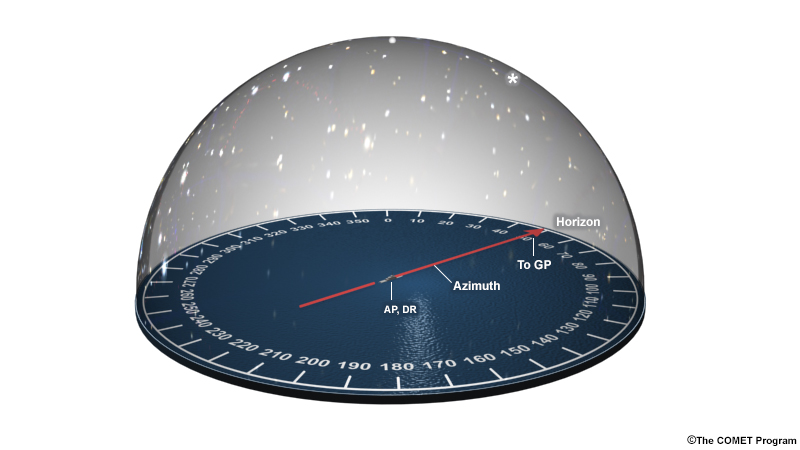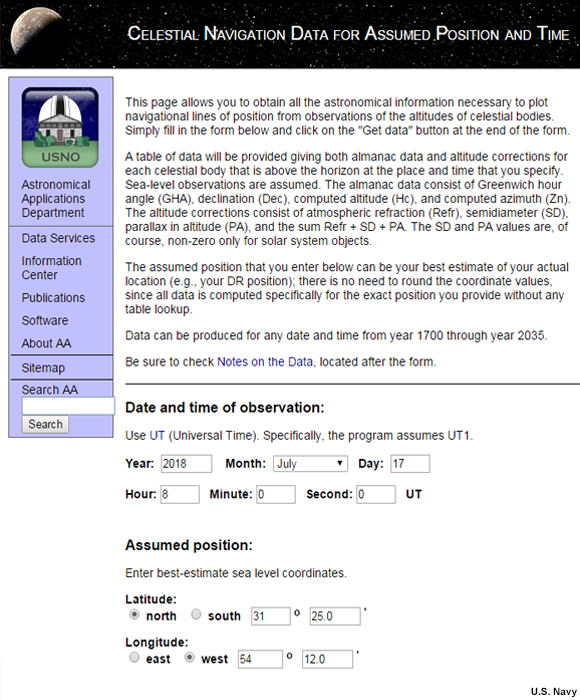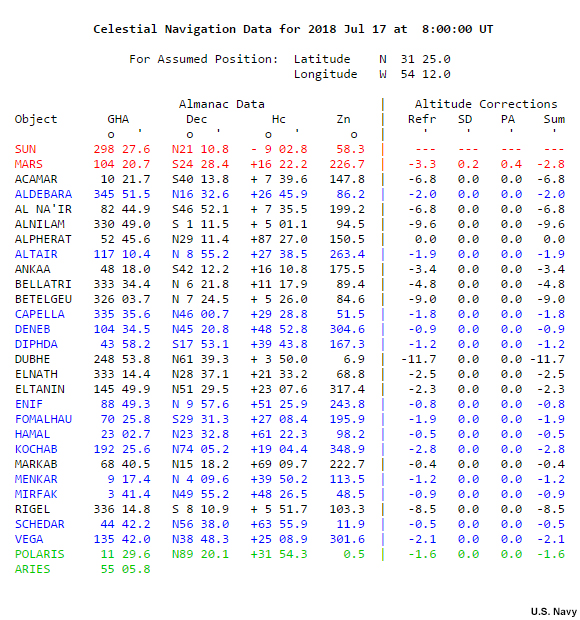The Intercept Method » Computed Altitude and Azimuth (Hc and Zn)
USNO Celestial Navigation Calculator: http://aa.usno.navy.mil/data/docs/celnavtable.php
The next step in the Intercept method is to get the Computed Altitude and Azimuth of the star. This is done for our Dead Reckoning position at the time we took the sextant observation.

Computed altitude, also called Height computed and noted Hc, is what the observed altitude, Ho, would be if we were exactly at the DR position. Likewise, the azimuth is the direction to the star's geographic position if we were exactly at the DR position. Remember our DR position is only an approximate position. We may be there, but we most likely are not.
Up until now we have not defined what azimuth is. Azimuth is a measure along the horizon to the location of an object. We measure it from true north toward the east. Like altitude, it is an angular measure. Because the horizon appears like a full circle, azimuths run from 0 to 360 degrees; both 0 and 360 degrees are due north. An azimuth of 90 degrees is due east. Due south is 180 degrees, and due west has an azimuth of 270 degrees. In this module, the azimuth is the direction to the star's geographic position.

For the purpose of this module, we will assume that we have access to the internet. The U.S. Naval Observatory has a free celestial navigation calculator online.
USNO Celestial Navigation Calculator: http://aa.usno.navy.mil/data/docs/celnavtable.php.)
Let's use it to determine Hc and Zn.

For our example, we put in the date and time in the appropriate box. 2018, July 17. Universal time of the observation is 8 hours 0 minutes 0 seconds. Our dead reckoning position is latitude 31 degrees 25.0 minutes North and 054 degrees 12 minutes West.
The output is a table with visible objects for that date, time, and location.

In our example, we observed Capella. From the table, we can see the computed altitude is 29 degrees 28.8 minutes. And the azimuth is 51.5 degrees.
You will notice other data on this table as well, such as the GHA and Declination of each object. You may remember that this corresponds to the geographic position of the body. Other information is explained in the "Notes on the Data" section of the input page.